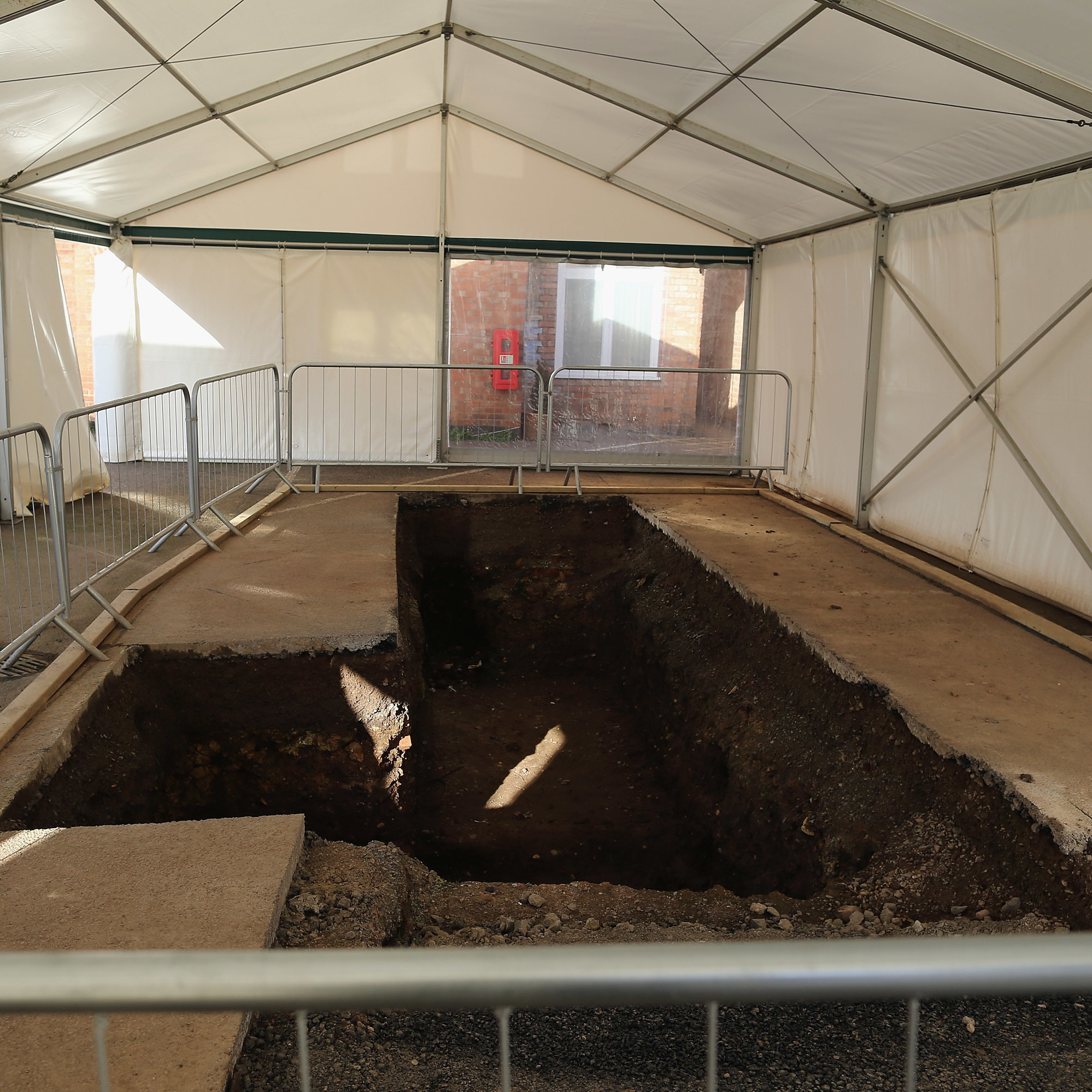A car park in the English city of Leicester, where the remains of King Richard III were discovered five years ago, is now a protected monument.
Specifically, the location has been given scheduled monument status and described as “one of the most important sites in [the U.K.’s] … national history.”
Richard III famously met his fate on Aug. 22, 1485, at the climactic Battle of Bosworth, which ended the War of the Roses and ushered in England’s House of Tudor.
According to contemporaneous reports, after his death in battle at about age 32, Richard III was buried at Greyfriars Church, a 13th Century monastic friary in the city of Leicester. The church is thought to have been destroyed during the reign of Henry VIII.
Fast forward five centuries and British archeologists comparing old and new maps, determined the location of the medieval friary. In an interview with All Things Considered back in 2012, Philippa Langley of the Richard III Society told NPR’s Robert Siegel “it became clear, when we did this analysis, that the church and the precinct of the Greyfriars was definitely in the area of the parking lot.”

9(MDAxODM0MDY4MDEyMTY4NDA3MzI3YjkzMw004))








